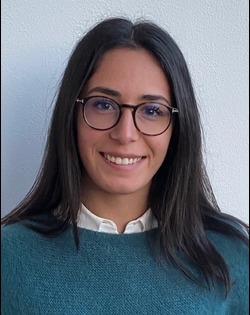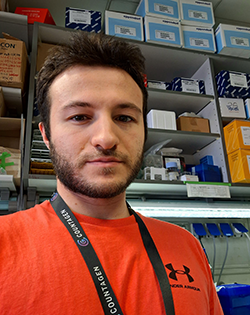
San Raffaele Telethon Institute for Gene Therapy
Liver gene therapy

We are a young and dynamic group that focuses on the biotechnological aspects and translational applications of liver-directed gene transfer and editing. We investigate both lentiviral vector-mediated liver gene transfer and targeted gene editing strategies and their interplay with liver tissue dynamics during post-natal growth, homeostatic turnover and tissue damage, exploiting advanced organoid and omics technologies and preclinical models of hemophilia and inherited diseases of hepatic metabolism, with the ultimate goal of devising advanced gene therapy products as novel treatments for affected patients.
Research activity
Liver-directed lentiviral gene transfer - The overall goal of this area is to define and tailor the best liver-directed lentiviral vector (LV)-based gene transfer strategy for monogenic diseases affecting liver function. While some diseases are non-cell autonomous diseases and relatively few hepatocytes producing enough transgene can correct the disease, other metabolic liver diseases are cell autonomous; thus, a relatively large functional cell mass is required for therapeutic benefit. Thus, it is important to determine the threshold of genetically corrected hepatocytes required for disease correction and assess whether cross-correction or selective advantage occurs in animal models of some inherited diseases, and to prioritize them based on the severity and age of onset and availability of alternative treatments, to establish which monogenic liver diseases will mostly benefit from LV gene therapy. Furthermore it is important to continue to investigate which biological barriers limit in vivo liver gene transfer by LV and how to overcome them, with a focus on the interactions of LV with the innate immune system and other cell types encountered during the journey from the blood to the liver, and to devise ways to modulate them, by both engineering LV and/or conditioning the host to better receive the therapeutic gene modification.
Liver-directed gene editing - Here we are exploring and developing targeted gene editing technologies as gene therapy strategies for inherited diseases of hepatic metabolism, as novel/complementary strategies to LV gene transfer. We are exploring both site-specific integration of transgenes into the endogenous genomic loci or into genomic safe harbors, permissive and tolerant to targeted integration, particularly in disease settings in which the endogenous regulation of transgene expression and/or the tissue contexts provide a rationale for targeted rather than semi-random LV-mediated transgene integration. We are also exploring targeted base editing approaches for selected disease indications, amenable to correction by tailored gene therapy strategies, also exploiting novel or ad-hoc generated mouse models, suitable to assess the efficacy and safety of the editing technologies.
Liver tissue dynamics - Maintenance of the genetic modification upon hepatocytes’ proliferation in liver growth and turnover requires targeting the cells underlying these processes. Little is known about postnatal liver growth and how different hepatocyte subsets contribute to it. We found that most hepatocytes are quiescent during liver growth, and a fraction of them generate most of the adult tissue. The overall goal of this area is to dissect hepatocyte heterogeneity in post-natal liver maturation and unravel its implications for in vivo gene engineering, to ultimately design and develop safe, effective, and durable gene therapies to treat diseases of hepatic metabolism in pediatric patients. To achieve this goal, we will characterize molecular programs of proliferating and quiescent hepatocyte subsets and assess their susceptibility to lentiviral gene transfer and nuclease-mediated gene editing, then estimate clonal dynamics of genetically modified hepatocytes in vivo and analyze gene signatures in human liver samples, to connect data on murine and human hepatocyte subsets.
Milani M, Starinieri F, Beretta S, Monti M, Canepari C, Marabotti F, Zambrano S, Mazza D, Fabiano A, Simoni C, Cammarota E, Volpin M, Bortolussi M, Russo F, Biffi M, Genua M, Degl’Innocenti S, Sanvito F, Ostuni R, Muro A, Montini E, Moalli F, Iannacone M, Merelli I, Cantore A. Spatiotemporal liver dynamics shape hepatocellular heterogeneity and impact in vivo gene engineering. J Hepatol. In press.
Milani M, Fabiano A, Perez-Rodriguez M, Hernandez RJ, Zecchillo A, Zonari E, Ottonello S, Basso-Ricci L, Canepari C, Volpin M, Iannello V, Capo V, Quaranta P, Seffin L, Russo F, Biffi M, Ormoli L, Brombin C, Carlucci F, Forlino A, Filibian M, Montini E, Scala S, Villa A, Bueren JA, Rio P, Aiuti A, Cantore A*, Naldini L*. In vivo haemopoietic stem cell gene therapy enabled by postnatal trafficking. Nature 2025; *Co-last authors.
Canepari C, Milani M, Simoni C, Starinieri F, Volpin M, Fabiano A, Biffi M, Russo F, Norata R, Rocchi M, Brombin C, Cugnata F, Montini E, Sanvito F, Grompe M, Cantore A. Enhancing the potency of in vivo lentiviral vector mediated gene therapy to hepatocytes. Nature Communications 2025.
Simoni C, Nozi J, Starinieri F, La Bella T, Manta E, Negri C, Biffi M, Norata R, Rocchi M, Sanvito F, Ronzitti G, Barbon E, Cantore A. Liver fibrosis negatively impacts in vivo gene transfer to hepatocytes. Nature Communications 2025.
Milani M, Starinieri F, Beretta S, Fabiano A, Plati T, Canepari C, Biffi M, Russo F, Norata R, Sanvito F, Merelli I, Aloia L, Huch M, Naldini L, Cantore A. Identification of hepatocyte-primed cholangiocytes in homeostatic liver by lentiviral gene transfer to mice and non-human primates. Cell Rep 2025.
Milani M, Canepari C, Assanelli S, Merlin S, Borroni E, Starinieri F, Biffi M, Russo F, Fabiano A, Zambroni D, Annoni A, Naldini L, Follenzi A, Cantore A. GP64-pseudotyped lentiviral vectors target liver endothelial cells and correct hemophilia A mice. EMBO Mol Med 2024.
Ho N, Agarwal S, Milani M, Cantore A, Buchholz CJ, Thalheimer FB. In vivo generation of CAR T cells in the presence of human myeloid cells. Mol Ther Methods Clin Dev 2022.
Milani M, Canepari C, Liu T, Biffi M, Russo F, Plati T, Curto R, Patarroyo-White S, Drager D, Visigalli I, Brombin C, Albertini P, Follenzi A, Ayuso E, Mueller C, Annoni A, Naldini L*, Cantore A*. Liver-directed lentiviral gene therapy corrects hemophilia A mice and achieves normal-range factor VIII activity in non-human primates. Nature Communications 2022; *Co-last, co-corresponding authors.
Cesana D, Calabria A, Rudilosso L, Gallina P, Benedicenti F, Spinozzi G, Schiroli G, Magnani A, Acquati S, Fumagalli F, Calbi V, Witzel M, Bushman FD, Cantore A, Genovese P, Klein C, Fischer A, Cavazzana M, Six E, Aiuti A, Naldini L, Montini E. Retrieval of vector integration sites from cell-free DNA. Nat Med 2021.
Vonada A, Tiyaboonchai A, Nygaard S, Posey J, Peters AM, Winn SR, Cantore A, Naldini L, Harding CO, Grompe M. Therapeutic liver repopulation by transient acetaminophen selection of gene-modified hepatocytes. Sci Transl Med 2021.
Milani M, Annoni A, Moalli F, Liu T, Cesana D, Calabria A, Bartolaccini S, Biffi M, Russo F, Visigalli I, Raimondi A, Patarroyo-White S, Drager D, Cristofori P, Ayuso E, Montini E, Peters R, Iannacone M, Cantore A*, Naldini L*. Phagocytosis-Shielded Lentiviral Vectors Improve Liver Gene Therapy in Non Human Primates. Sci Transl Med 2021; *Co-last, co-corresponding authors.
Featured in: https://www.nature.com/articles/d42473-019-00271-9; https://www.nature.com/articles/s41684-019-0367-x
Milani M, Annoni A, Bartolaccini S, Biffi M, Russo F, Di Tomaso T, Raimondi A, Lengler J, Holmes MC, Scheiflinger F, Lombardo A, Cantore A*, Naldini L*. Genome editing for scalable production of alloantigen-free lentiviral vectors for in vivo gene therapy. EMBO Mol Med 2017; *Co-last authors.
Simoni C, Barbon E, Muro AF, Cantore A. In vivo liver targeted genome editing as therapeutic approach: progresses and challenges. Front Genome Ed 2024.
Canepari, Cantore A. Gene transfer and genome editing for familial hypercholesterolemia. Front Mol Med 2023.
Cantore A, Fraldi A, Meneghini V, Gritti A. In vivo Gene Therapy to the Liver and Nervous System: Promises and Challenges. Front Med (Lausanne) 2022.
Mauro Biffi
Senior technician/Lab Manager
Cesare Canepari
Postdoc fellow
Michela Milani
Project Leader
Chiara Simoni
Postdoc Fellow
Elena Barbon
Staff Scientist
Anna Fabiano
Technician
Elisabetta Manta
Technician
Maria Lucia Longo
Technician
Francesca Marabotti
PhD Student
Maurizio Cavallo
Research Fellow
Marco Monti
Bioinformatician
Claudia Mazzeo
Master Student
Andrea Mariancini
Technician
Sarah Giannone
Master Student









